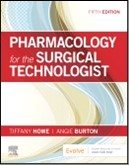This book describes newly developed methods of assessing the autonomic nervous system. Up-to-date information on microneurographic analysis of human cardiovascular and thermoregulatory function in humans, heart rate variability, and 131I-metaiodobenzylguanidine (MIBG) scintigraphy are provided.
Microneurography, which was originally developed as a technique to analyze the afferent muscle spindle, came to be used to analyze sympathetic nerve activity in the mid-1980s. In the twenty-first century, this technique has become prevalent all over the world especially in investigating the pathophysiology of human cardiovascular function. It is also now used in researching human thermoregulatory function. Heart rate variability is another valuable tool in investigating the current status of human vagal function and in predicting future cardiovascular disease. MIBG is also used to assess cardiac noradrenergic function, especially decreases associated with Parkinson’s disease, Lewy body disease, and multisystem atrophy. Overviews of recent advances in these three important assessments are provided by leading experts.
Clinical Assessment of the Autonomic Nervous System is a useful resource for neurologists and researchers of clinical neurophysiology.
PART I: Sympathetic Microneurography.-
1 Introduction to Sympathetic Microneurography.-
2 Muscle Sympathetic Nerve Activity in Neurological Disorders.-
3 Muscle Sympathetic Nerve Activity and Cardiovascular Diseases.-
4 Skin sympathetic nerve activity and thermoregulatory control in humans.-
5 Muscle Sympathetic Nerve Activity and Syncope.-
6 Single Fiber Analysis of Muscle Sympathetic Nerve Activity.-
PART II: Heart Rate Variability (HRV).-
7 Introduction to Heart Rate Variability.-
8 Respiratory Sinus Arrhythmia and Entraining Heartbeats with Cheyne-Stokes Respiration – Cardiopulmonary Works to be Minimal by Synchronizing Heartbeats with Breathing.-
9 Heart RateVariability and Sympathetic Nerve Activity.-
10 Heart Rate Variability and Cardiac Diseases.-
11 Heart-rate Variability and Neurological Disorders.-
PART III: Cardiac MIBG Scintigraphy.-
12 An introduction to MIBG cardiac scintigraphy.-
13 Noradrenaline and 123I-meta-iodobenzylguanidine Kinetics in the Sympathetic Nervous System.-
14 Technical Considerations for MIBG Cardiac Scintigraphy.-
15 Findings of 123I-MIBG cardiac scintigraphy : Parkinson’s disease and related disorders, and others. (RBD, cardiac diseases, DM, etc).-
16 Findings of MIBG Cardiac Scintigraphy: Dementia with Lewy Bodies and Related Dementia.-
17 Physiological Background of Reduced Cardiac 123I-metaiodobenzylguanidine Uptake.-
18 Pathological background of reduced cardiac MIBG uptake.-
19 Clinical Implication of Reduced Cardiac MIBG Uptake.
Editors:
Satoshi Iwase, Aichi Medical University, Nagakute, Japan
Junichiro Hayano, Nagoya City University, Nagoya, Japan
Satoshi Orimo, Kanto Central Hospital, Tokyo, Japan
This book describes newly developed methods of assessing the autonomic nervous system. Up-to-date information on microneurographic analysis of human cardiovascular and thermoregulatory function in humans, heart rate variability, and131I-metaiodobenzylguanidine (MIBG) scintigraphy are provided.
Microneurography, which was originally developed as a technique to analyze the afferent muscle spindle, came to be used to analyze sympathetic nerve activity in the mid-1980s. In the twenty-first century, this technique has become prevalent all over the world especially in investigating the pathophysiology of human cardiovascular function. It is also now used in researching human thermoregulatory function. Heart rate variability is another valuable tool in investigating the current status of human vagal function and in predicting future cardiovascular disease. MIBG is also used to assess cardiac noradrenergic function, especially decreases associated with Parkinson’s disease, Lewy body disease, and multisystem atrophy. Overviews of recent advances in these three important assessments are provided by leading experts.
Clinical Assessment of the Autonomic Nervous System is a useful resource for neurologists and researchers of clinical neurophysiology.
Describes newly developed methods of assessing the autonomic nervous system
Provides up-to-date information on microneurography, heart rate variability, and MIBG scintigraphy
Useful resource for neurologists and researchers of clinical neurophysiology





